- The Secret to Growing a Bountiful Harvest of Large Potatoes from a Single Plant
- Choose the Right Variety
- Prepare the Soil
- Planting and Hilling
- Watering and Fertilizing
- Protecting from Pests and Diseases
- Harvesting
- Choosing the Right Variety of Potato
- Preparing the Soil for Optimal Potato Growth
- 1. Choose the Right Location
- 2. Loosen the Soil
- 3. Improve Soil Texture
- 4. Test Soil pH
- 5. Adjust Soil pH
- 6. Fertilize the Soil
- 7. Rake the Soil
- 8. Water the Soil
- Planting Potatoes: A Step-by-Step Guide
- Providing the Ideal Growing Conditions for Potatoes
- Soil
- Sunlight
- Temperature
- Watering
- Fertilizer
- Mulching
- Pest and Disease Control
- Harvesting
- Caring for Potato Plants: Watering, Mulching, and Fertilizing
- Watering
- Mulching
- Fertilizing
- Protecting Potato Plants from Pests and Diseases
- 1. Plant Disease-Resistant Varieties
- 2. Rotate Crops
- 3. Proper Soil and Fertilization
- 4. Practice Good Watering Techniques
- 5. Implement Proper Weed Control
- 6. Monitor for Pests and Diseases
- 7. Crop Protection and Pest Control
- Harvesting Potatoes at the Peak of Perfection
- 1. Wait for the right time
- 2. Prepare the area
- 3. Dig carefully
- 4. Sort and store
- 5. Enjoy!
- Saving Seed Potatoes for Future Planting
- Selecting the Right Potatoes
- Harvesting Seed Potatoes
- Curing and Storing
- Testing for Viability
- Rotating Seed Potatoes
- Conclusion
- “Question-Answer”
- What is the best way to grow potatoes in a bucket?
- How long does it take for the potatoes to grow in a bucket?
- Can I use any type of bucket for growing potatoes?
- What are some tips for successful potato growth in a bucket?
- Are there any common problems or pests that can affect potato growth in a bucket?
- “Video” I grew 235 lbs Of Potatoes in 200 sq ft Without Watering
Are you tired of buying small and tasteless potatoes from the grocery store? Do you want to grow your own delicious and large potatoes at home? Look no further! In this article, we will share with you a simple and effective method to grow a bucket of large potatoes from a single bush.
Traditionally, potatoes are grown in the ground, but this method requires a lot of space and is not suitable for everyone. The bucket method, on the other hand, allows you to grow potatoes even in small urban spaces such as balconies or patios.
To get started, you will need a large bucket with drainage holes at the bottom, high-quality soil, and a potato bush. You can easily purchase a potato bush from a local nursery or use one from your kitchen that has started to sprout. The sprouts, also known as eyes, are key to growing a new potato plant.
First, fill the bucket with soil up to one-third of its height. Place the potato bush on top of the soil, ensuring that the sprouts are facing upwards. Cover the bush with more soil, leaving a few inches of space at the top to allow for watering.
The Secret to Growing a Bountiful Harvest of Large Potatoes from a Single Plant
Growing large potatoes can be a rewarding and satisfying experience for any gardening enthusiast. With a few simple techniques and a little bit of patience, you can grow a bucket full of large potatoes from just a single plant. Here’s the secret to achieving a bountiful harvest:
Choose the Right Variety
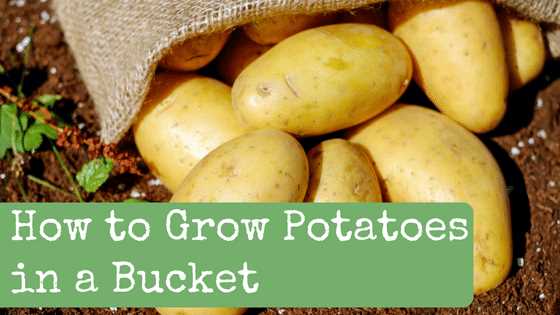
First and foremost, it’s important to choose the right variety of potatoes. Some varieties are naturally inclined to produce larger tubers, while others are better suited for smaller potatoes. Look for varieties such as Russet, Yukon Gold, or Kennebec, which are known for their ability to produce large potatoes.
Prepare the Soil
The next step is to prepare the soil for planting. Potatoes prefer loose, well-drained soil that is rich in organic matter. Add compost or well-rotted manure to the soil to improve its fertility and drainage. Avoid using fresh manure, as it can burn the roots of the potato plants.
Planting and Hilling
Plant your potato tubers in early spring, when the soil temperature reaches around 45 degrees Fahrenheit (7 degrees Celsius). Dig a trench about 6 inches (15 cm) deep and place the tubers in the trench, ensuring they are spaced about 12 inches (30 cm) apart. Cover the tubers with soil and water gently.
As the potato plants grow, continue to “hill” them. This involves adding soil around the base of the plants, covering the lower stems and leaving only a few inches of the plant showing. Hilling promotes root development and protects the developing tubers from sunlight, preventing them from turning green.
Watering and Fertilizing
Potatoes require consistent moisture throughout the growing season. Water them regularly, aiming to keep the soil evenly moist but not waterlogged. Avoid overhead watering, as it can increase the risk of disease.
When it comes to fertilizing, potatoes benefit from a balanced, slow-release fertilizer applied at planting time. Additionally, you can side-dress the plants with a nitrogen-rich fertilizer when they start to produce flowers. This will help promote the growth of larger tubers. Be careful not to over-fertilize, as this can lead to excessive vegetative growth at the expense of tuber development.
Protecting from Pests and Diseases
Potatoes are susceptible to various pests and diseases, including aphids, potato beetles, and blight. Monitor your plants regularly for signs of infestation or disease and take appropriate action. Use organic pest control methods whenever possible, such as handpicking pests or using insecticidal soap.
Harvesting
Once the potato plants have flowered and the foliage starts to yellow and die back, it’s time to harvest your potatoes. Carefully dig around the base of the plant to avoid damaging the tubers. Gently lift the potatoes from the soil, brush off any excess dirt, and allow them to dry in a cool, dark place before storing.
Following these steps, you’ll be well on your way to growing a bucket full of large potatoes from just a single plant. Enjoy the satisfaction of digging up your own homegrown potatoes and savoring their rich, flavorful taste.
Choosing the Right Variety of Potato
When it comes to growing a bucket of large potatoes, choosing the right variety is crucial. Different potato varieties have different growth habits, sizes, and flavors, so it’s important to select the variety that best suits your preferences and growing conditions.
1. Determining your preferences:
- Consider the size and shape of the potatoes you prefer. Some varieties produce large, oval-shaped potatoes, while others yield smaller, rounder ones.
- Think about the texture and taste you like in a potato. Some varieties are known for their fluffy texture, while others are more waxy.
- Consider the cooking qualities you desire. Some potatoes are excellent for baking, while others are better for mashing or frying.
2. Assessing your growing conditions:
- Take into account the amount of sunlight your growing area receives. Some potato varieties thrive in full sun, while others can tolerate partial shade.
- Consider the climate and temperature of your region. Certain varieties are more cold-tolerant, while others require warmer conditions to grow optimally.
- Evaluate the soil type and quality in your garden. Different varieties have different soil preferences, such as sandy, loamy, or clay soil.
3. Exploring popular potato varieties:
There are numerous potato varieties available, but here are a few popular ones to consider:
- Russet Burbank: Known for its large size and excellent baking qualities, this variety is a staple in many kitchens.
- Yukon Gold: With its golden flesh and buttery flavor, this variety is prized for boiling, mashing, or roasting.
- Kennebec: These large, round potatoes are versatile and can be used in various cooking methods, including frying, baking, and boiling.
- Red Pontiac: A popular variety for its vibrant red skin and white flesh, it is often used for boiling, steaming, or salads.
4. Local availability and recommendations:
Before making a final decision, it’s a good idea to check with local nurseries, agricultural extension offices, or experienced gardeners in your area. They can provide valuable insight into which potato varieties perform well in your specific region.
Remember, choosing the right variety of potato is essential for a successful and satisfying potato-growing experience. Consider your preferences and growing conditions, and explore the many options available to find the perfect variety for your bucket of large potatoes.
Preparing the Soil for Optimal Potato Growth
Before planting your potatoes, it is important to prepare the soil to provide the optimal growing conditions. Here are a few steps you can follow to ensure the soil is ready for your potato plants:
1. Choose the Right Location
- Find a spot in your garden that receives at least six hours of direct sunlight each day.
- Ensure that the location has good drainage to prevent waterlogged soil.
- Remove any rocks, weeds, or debris from the area to create a clean planting space.
2. Loosen the Soil
Use a garden fork or a tiller to loosen the soil in the planting area. This will help to improve aeration and allow the potato roots to grow freely. Work the soil to a depth of at least 8-10 inches.
3. Improve Soil Texture
- Add organic matter such as compost or well-rotted manure to improve the soil texture and nutrient content.
- Mix the organic matter into the soil thoroughly, ensuring it is evenly distributed.
4. Test Soil pH
It is important to know the pH level of your soil, as potatoes prefer slightly acidic soil with a pH range of 5.5 to 6.5. You can use a soil testing kit or send a sample to a local agricultural extension office for analysis.
5. Adjust Soil pH
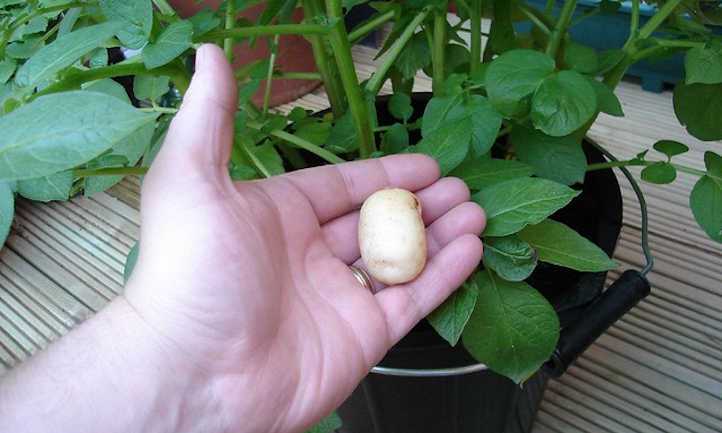
If the pH of your soil is outside the desired range, you can adjust it by adding soil amendments. To lower the pH, you can add elemental sulfur or acidic organic materials like pine needles. To raise the pH, you can add lime or wood ash.
6. Fertilize the Soil
Potatoes are heavy feeders and require a fertile soil. Incorporate a balanced fertilizer, such as a 10-10-10 formula, into the soil before planting. Follow the package instructions for the appropriate amount to apply.
7. Rake the Soil
After incorporating the organic matter and fertilizer, use a rake to level the soil surface. Remove any large clumps or rocks that may interfere with the growth of the potato plants.
8. Water the Soil
Before planting the potato tubers, thoroughly water the soil to ensure it is evenly moist. This will help to create a favorable environment for the potatoes to develop roots.
By following these steps, you can prepare the soil for optimal potato growth and maximize your harvest. Remember to provide ongoing care, such as regular watering, weeding, and hilling, to ensure healthy and abundant potato plants.
Planting Potatoes: A Step-by-Step Guide
Planting potatoes is a relatively easy process that can yield a bucketful of delicious spuds. Whether you have a large garden or just a small space, you can grow your own potatoes with just a few simple steps. Follow this step-by-step guide to get started:
- Choose a potato variety: First, decide on the type of potato you want to plant. There are three main categories: early, maincrop, and salad potatoes. Each variety has its own characteristics, so choose the one that suits your taste and needs.
- Prepare the soil: Potatoes prefer loose, well-draining soil. Remove any weeds, stones, or debris from the planting area. Dig in some organic matter, such as compost or well-rotted manure, to improve the soil’s fertility.
- Chit the potatoes: Chitting is the process of encouraging the potatoes to sprout before planting. Place the seed potatoes in an egg carton or a seed tray, with the “rose” end (the end with the most eyes) facing upward. Keep them in a cool, light place for a few weeks until the shoots are about an inch long.
- Prepare planting holes: Dig planting holes about 4-6 inches deep and 12-15 inches apart. If you’re planting rows, space them about 2-3 feet apart. This will allow the potatoes room to grow and prevent them from crowding each other.
- Plant the potatoes: Place each chitted potato into a planting hole, with the shoots facing up. Cover the potatoes with soil, making sure they are completely buried. Pat down the soil gently to eliminate air pockets.
- Water and mulch: After planting, water the potatoes thoroughly to settle the soil. Then, apply a layer of organic mulch, such as straw or wood chips, to help conserve moisture and suppress weed growth.
- Maintain the plants: Keep the soil consistently moist but not overly wet. As the plants grow, mound soil around the stems to encourage more tuber formation. Watch out for pests and diseases, and take appropriate measures to protect your plants.
- Harvest the potatoes: Potatoes can be harvested when the foliage has died back and turned yellow or brown. Using a garden fork or shovel, carefully dig around the plants and lift the potatoes from the ground. Let them dry for a few hours before storing them in a cool, dark place.
Now that you know the step-by-step process of planting potatoes, you can enjoy the satisfaction of growing your own delicious spuds. Happy gardening!
Providing the Ideal Growing Conditions for Potatoes
Creating the perfect growing conditions for potatoes is essential to ensure a bountiful harvest of large, healthy tubers. Here are some key factors to consider:
Soil
Potatoes thrive in well-draining soil that is rich in organic matter. Before planting, amend the soil with aged compost or well-rotted manure to improve its fertility and texture. A pH level between 5.8 and 6.5 is optimal for potatoes.
Sunlight
Potatoes require at least 6 to 8 hours of direct sunlight daily. Choose a location in your garden that receives ample sunlight throughout the day.
Temperature
Potatoes grow best in cool climates with temperatures between 60°F (15°C) and 70°F (21°C). If you live in a region with hot summers, consider planting potatoes in early spring or late fall when temperatures are more moderate.
Watering
Consistent moisture is important for potato growth, but overwatering can lead to disease and rot. Water your potato plants deeply once or twice a week, ensuring that the soil remains evenly moist but not overly saturated.
Fertilizer
Provide your potato plants with a balanced fertilizer to promote healthy growth. Avoid high nitrogen fertilizers, as they encourage excessive leaf growth at the expense of tuber formation.
Mulching
Applying a layer of organic mulch around your potato plants helps conserve moisture, suppresses weeds, and regulates soil temperature. Straw, wood chips, or dried leaves make excellent mulching materials.
Pest and Disease Control
Preventive measures are crucial to protect your potato plants from pests and diseases. Rotate your potato crops annually to reduce the risk of soil-borne diseases. Monitor for common pests like aphids, Colorado potato beetles, and potato tuber moths, and take appropriate action if necessary.
Harvesting
Harvest your potatoes when the foliage has begun to yellow and die back. Gently dig up the tubers using a garden fork or shovel, being careful not to damage them. Allow the harvested potatoes to cure in a shaded, well-ventilated area for about two weeks before storing them in a cool, dark place.
By providing the ideal growing conditions for your potatoes, you can enjoy a plentiful harvest of large, delicious tubers that will be the envy of your gardening friends. Happy growing!
Caring for Potato Plants: Watering, Mulching, and Fertilizing
Proper care for potato plants is essential to ensure healthy growth and a bountiful harvest. By paying attention to their watering, mulching, and fertilizing needs, you can maximize the yield of your potato plants.
Watering
Water is crucial for potato plants, especially during the tuber formation stage. The plants should be kept consistently moist, but not soggy. Overwatering can lead to rot and disease, while underwatering can result in stunted growth and small potatoes.
Here are some watering tips for potato plants:
- Water deeply once or twice a week, providing 1 to 2 inches of water each time.
- Water early in the day to allow moisture to penetrate the soil before the heat of the sun evaporates it.
- Monitor the soil moisture level regularly and adjust the watering schedule accordingly.
Mulching
Mulching helps to conserve moisture, suppress weeds, and regulate soil temperature, all of which are beneficial for potato plants. Organic materials such as straw or dried leaves make excellent mulch for potato plants.
Here’s how to apply mulch to your potato plants:
- Wait until the potato plants have grown to a height of about 6 inches.
- Spread a layer of mulch around the base of the plants, making sure to cover the soil completely.
- Avoid piling mulch against the stems, as this can lead to rot.
Fertilizing
Proper fertilization is important to provide the essential nutrients that potato plants need for healthy growth and tuber development. Before planting, incorporate well-rotted compost or organic matter into the soil to enrich its fertility.
Here are some tips for fertilizing potato plants:
- Apply a balanced fertilizer with equal amounts of nitrogen, phosphorus, and potassium once the plants have emerged.
- Avoid excessive nitrogen, as this can result in lush foliage but fewer potatoes.
- Apply fertilizer following the manufacturer’s instructions, typically spreading it evenly around the plants and lightly incorporating it into the soil.
By providing proper care through watering, mulching, and fertilizing, you can ensure that your potato plants thrive and produce a bucket full of large potatoes for your enjoyment.
Protecting Potato Plants from Pests and Diseases
Potato plants are susceptible to a variety of pests and diseases that can greatly hinder their growth and reduce potato yields. However, with proper precautions and management strategies, you can protect your potato plants from these threats and ensure a healthy and productive harvest.
1. Plant Disease-Resistant Varieties
One of the most effective ways to prevent diseases in potato plants is to choose disease-resistant varieties. These varieties are bred to have natural resistance to common potato diseases such as late blight, early blight, and potato scab. Look for varieties that are labeled as resistant or immune to specific diseases that are common in your area.
2. Rotate Crops
Rotating your potato crops is another essential practice to prevent the buildup of pests and diseases in the soil. Avoid planting potatoes in the same area for consecutive years, as this can lead to an increased risk of soilborne diseases and pests. Ideally, rotate your potatoes with non-related crops like legumes or brassicas.
3. Proper Soil and Fertilization
Healthy plants are more resistant to pests and diseases, so it’s important to maintain proper soil fertility and provide adequate nutrients to your potato plants. Conduct a soil test to determine the nutrient levels and pH of your soil and amend it accordingly. Use organic matter, such as compost or well-rotted manure, to improve soil structure and fertility.
4. Practice Good Watering Techniques
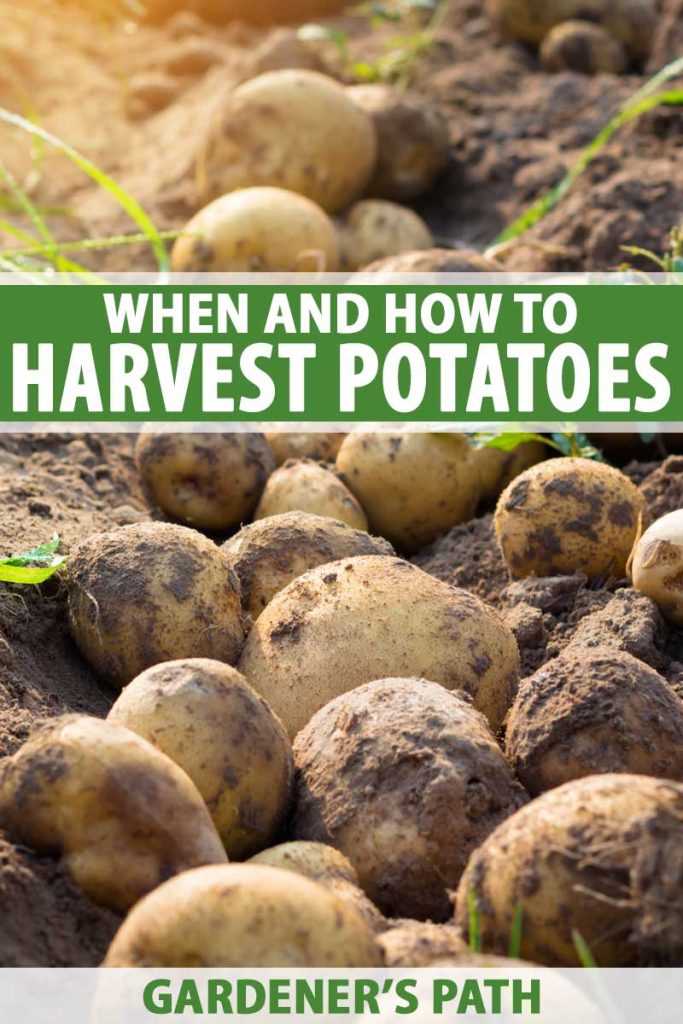
Avoid overwatering your potato plants, as excessive moisture can create favorable conditions for diseases like phytophthora and late blight. Water the plants deeply but infrequently to promote deep root growth and minimize the risk of soilborne diseases. Consider using drip irrigation or soaker hoses to deliver water directly to the roots and reduce water splashing on the foliage, which can lead to the spread of diseases.
5. Implement Proper Weed Control
Weeds not only compete with potato plants for nutrients but can also serve as hosts for pests and diseases. Implement a proactive weed control strategy that includes regular cultivation, hand weeding, or mulching. Mulching can help suppress weed growth and conserve moisture in the soil.
6. Monitor for Pests and Diseases
Regularly inspect your potato plants for signs of pests or diseases. Look for symptoms such as holes in leaves, yellowing foliage, wilting, or stunted growth. If you notice any issues, take action immediately to prevent the spread and minimize the damage. Consult with local agricultural extension offices or gardening experts for identification and suitable control methods.
7. Crop Protection and Pest Control
Consider using physical barriers, such as row covers or netting, to protect young potato plants from pests like aphids, potato beetles, or wireworms. For chemical control, use pesticides only as a last resort and follow the instructions on the label carefully to avoid any harm to beneficial insects and the environment.
By implementing these preventive measures and maintaining good cultural practices, you can greatly reduce the risk of pests and diseases in your potato plants. Protecting your plants will not only ensure a bountiful harvest but also contribute to the overall health and sustainability of your potato crop.
Harvesting Potatoes at the Peak of Perfection
Harvesting potatoes at the right time is crucial to ensure you get the highest quality and most flavorful potatoes possible. Here are some tips on how to harvest your potatoes at the peak of perfection.
1. Wait for the right time
It’s important to wait until your potato plants have finished flowering before you start harvesting. This is usually around 10 to 12 weeks after planting. The flowers indicate that the potatoes have reached their maximum size and are ready to be harvested.
2. Prepare the area
Before harvesting your potatoes, make sure to prepare the area where you will be working. Remove any weeds or debris from the soil to make the process easier and to avoid damaging the potatoes.
3. Dig carefully
When digging up your potatoes, it’s important to be gentle to avoid damaging them. Use a garden fork or shovel to carefully dig around the plants, starting a few inches away from the stems. Lift the potatoes gently from the soil, being careful not to bruise or cut them.
4. Sort and store
After harvesting, sort your potatoes and separate any damaged or diseased ones from the healthy ones. Damaged potatoes should be used first, as they will not store well. Store the healthy potatoes in a cool, dark, and well-ventilated space, such as a cellar or pantry.
5. Enjoy!
Once your potatoes are sorted and stored, it’s time to enjoy the fruits of your labor. Potatoes harvested at the peak of perfection have a delicious flavor and can be used in a variety of dishes. Whether you’re baking, mashing, frying, or roasting them, you’re sure to savor the taste of homegrown potatoes.
Saving Seed Potatoes for Future Planting
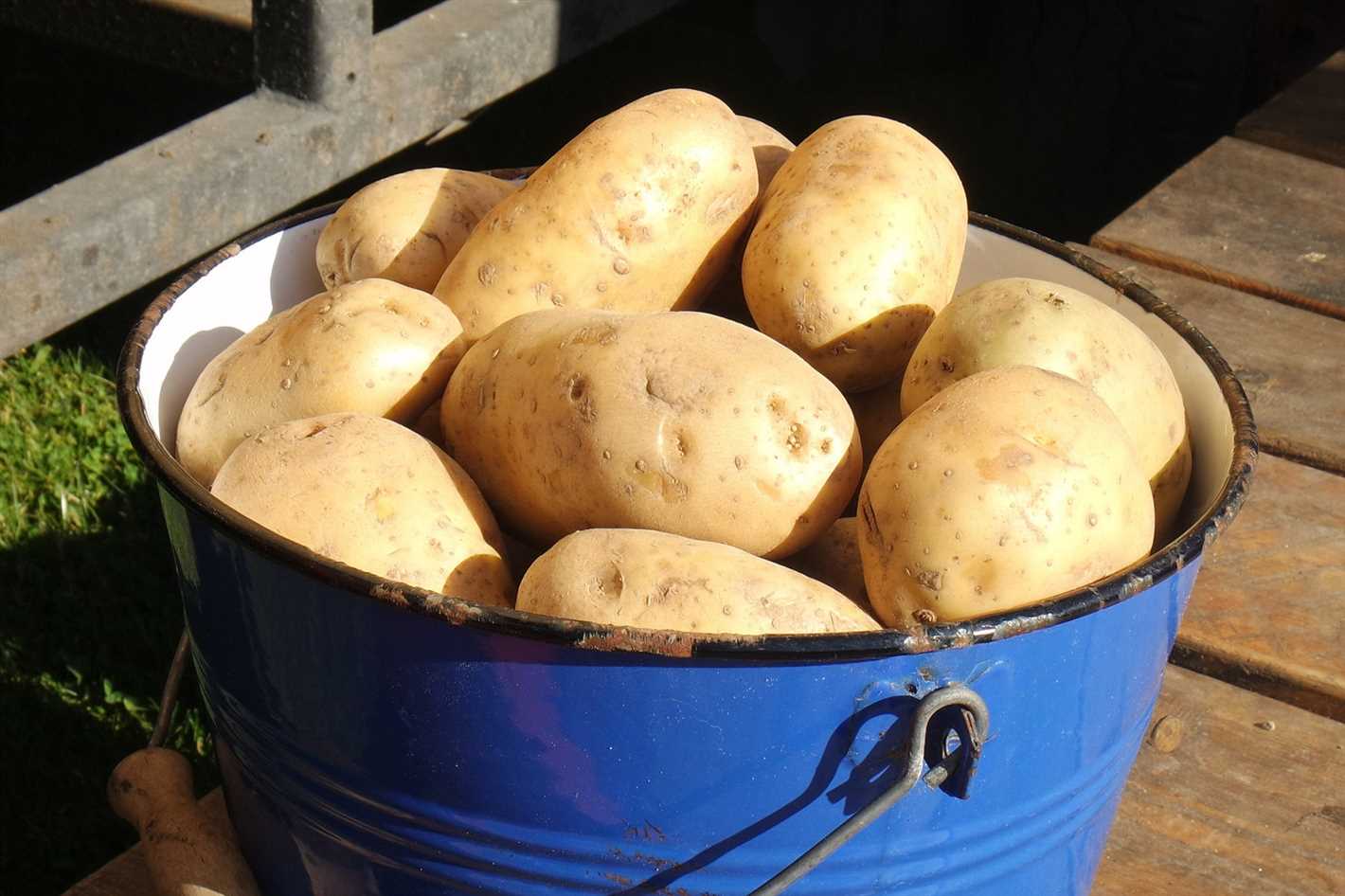
Once you have successfully grown a plentiful harvest of large potatoes, you may want to save some of the potatoes as seed for future plantings. Saving seed potatoes allows you to continue growing your own fresh and tasty potatoes without having to purchase new seed each year.
Selecting the Right Potatoes
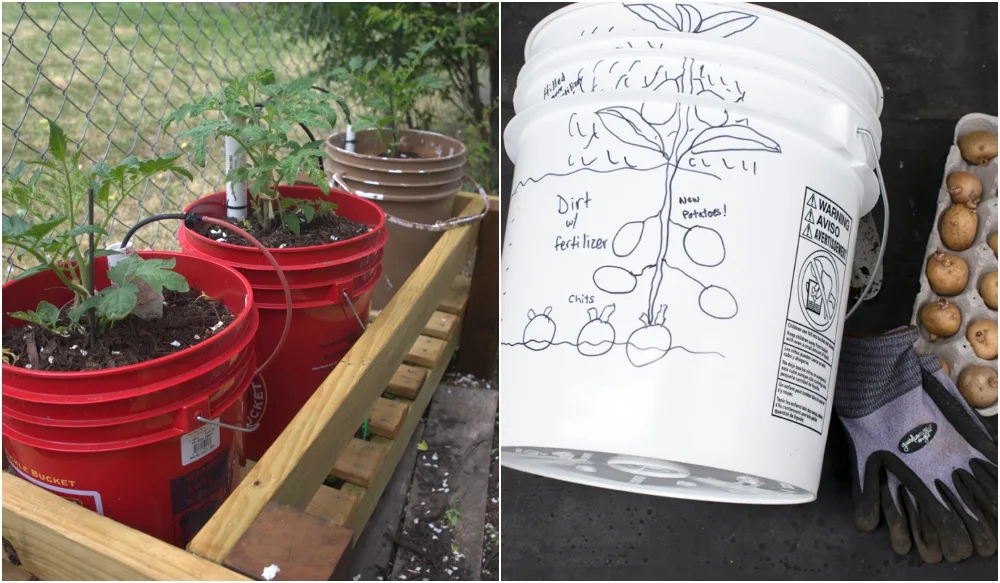
When choosing potatoes to save as seed, it is important to select healthy, disease-free potatoes. Look for potatoes that have smooth skin, are free from blemishes, and have minimal sprouting. Avoid potatoes that have rot, soft spots, or signs of disease.
Tip: It is best to save seed potatoes from varieties that performed well in your specific growing conditions.
Harvesting Seed Potatoes
The best time to harvest seed potatoes is after the plants have died back and the skins of the potatoes have hardened. Carefully dig up the potatoes, being careful not to damage them.
Curing and Storing
After harvesting the seed potatoes, you need to cure them before storing. Curing allows the potatoes to develop a thick skin and heal any cuts or bruises. Place the potatoes in a dry, well-ventilated area with temperatures between 45-60°F (7-15°C) for about 1-2 weeks. After curing, brush off any dirt, remove any damaged potatoes, and store in a cool, dark place with temperatures around 35-40°F (2-4°C).
Testing for Viability
Before planting your saved seed potatoes, it is important to test their viability. Cut each potato into sections, ensuring that each section has at least one eye or bud. Allow the cut pieces to air dry for a day or two, then plant them and wait for them to sprout. If a majority of the sections sprout, then your seed potatoes are viable and ready for planting.
Rotating Seed Potatoes
To maintain healthy soil and prevent disease buildup, it is important to rotate your seed potatoes each year. Do not plant potatoes in the same location for at least three years to minimize the risk of diseases and pests.
Conclusion
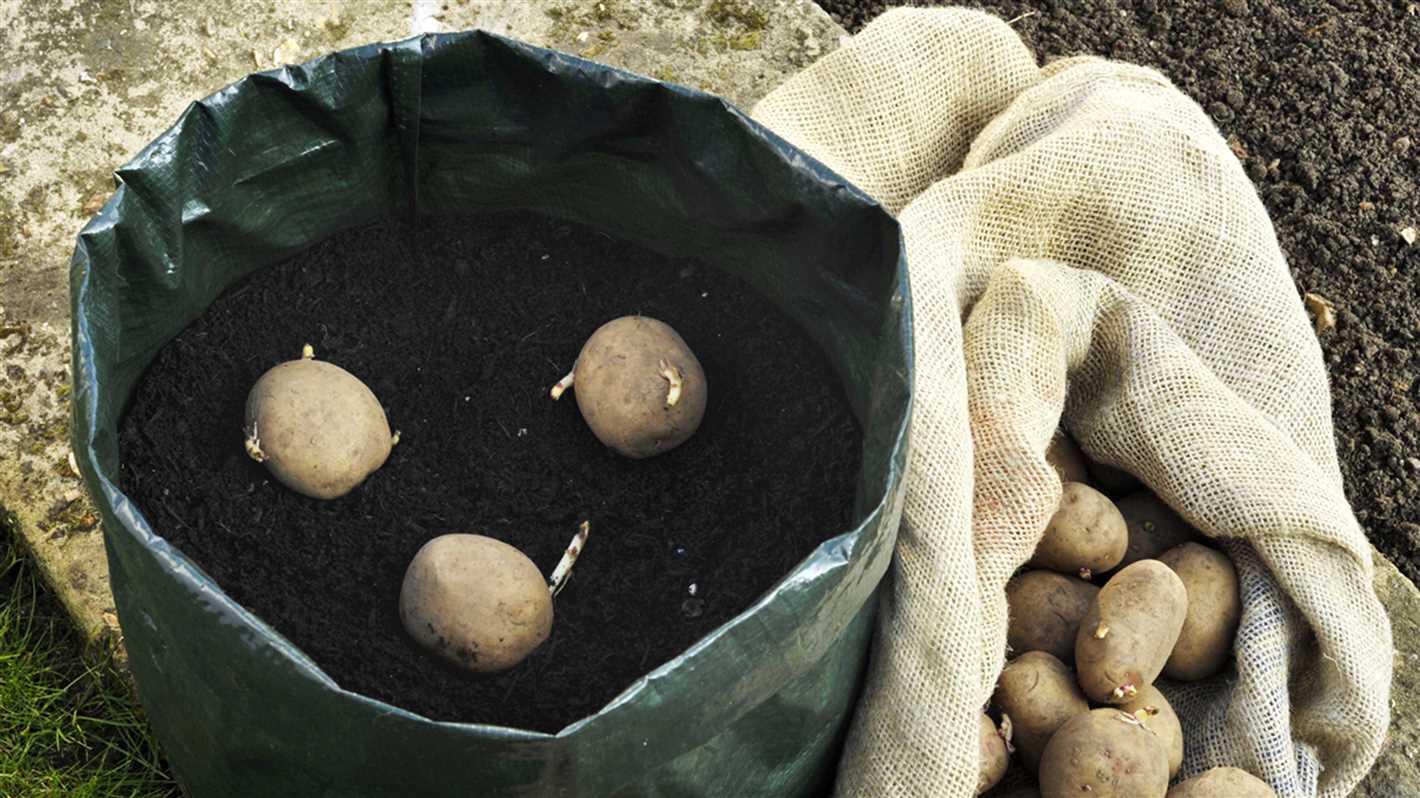
Saving seed potatoes is a great way to ensure a continuous supply of delicious potatoes from your garden. By selecting the right potatoes, harvesting and storing them properly, and testing for viability, you can enjoy a successful potato harvest year after year.
“Question-Answer”
What is the best way to grow potatoes in a bucket?
The best way to grow potatoes in a bucket is to start by selecting a large plastic bucket with drainage holes at the bottom. Then, fill the bucket with a good quality potting mix and plant a single potato seedling in the center. As the plant grows, keep adding potting mix to the bucket to cover the stems and encourage more tuber growth. Make sure to water the plant regularly and provide it with enough sunlight.
How long does it take for the potatoes to grow in a bucket?
The time it takes for potatoes to grow in a bucket can vary, but on average it takes about 90 to 120 days after planting for the potatoes to be ready for harvest. The exact time can depend on factors such as the potato variety, weather conditions, and how well the plant is cared for. It’s important to monitor the plant and potatoes regularly to determine when they are fully matured and ready to be harvested.
Can I use any type of bucket for growing potatoes?
While you can technically use any type of bucket for growing potatoes, it is best to choose a large plastic bucket with drainage holes at the bottom. Plastic buckets are lightweight, affordable, and easily accessible. The drainage holes ensure that excess water can escape, preventing waterlogging and root rot. Additionally, plastic buckets can be easily moved around to optimize sunlight exposure for the growing plant.
What are some tips for successful potato growth in a bucket?
For successful potato growth in a bucket, it’s important to follow a few tips. First, choose a suitable potato variety that is known for growing well in containers. Second, ensure that the bucket has proper drainage holes to prevent waterlogging. Third, use a good quality potting mix that provides proper nutrients and drainage. Fourth, plant a single potato seedling in the center of the bucket and gradually add more potting mix as the plant grows. Finally, provide the plant with enough sunlight, water regularly, and monitor its growth to ensure optimal conditions.
Are there any common problems or pests that can affect potato growth in a bucket?
Yes, there are a few common problems and pests that can affect potato growth in a bucket. One common problem is overwatering, which can lead to waterlogging and rotting of the tubers. It’s important to water the plant regularly, but not excessively. Another common problem is lack of sunlight, which can result in weak growth and inadequate tuber development. In terms of pests, aphids, potato beetles, and nematodes can all cause damage to the plant. It’s important to monitor the plant regularly and take appropriate measures such as using organic pest control methods if necessary.







